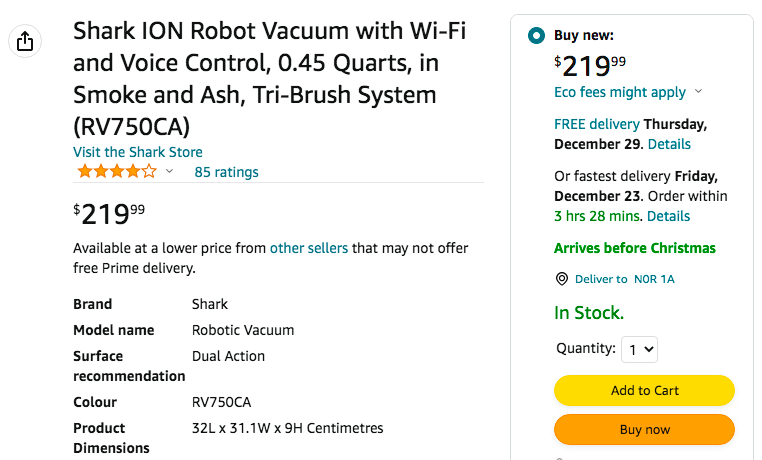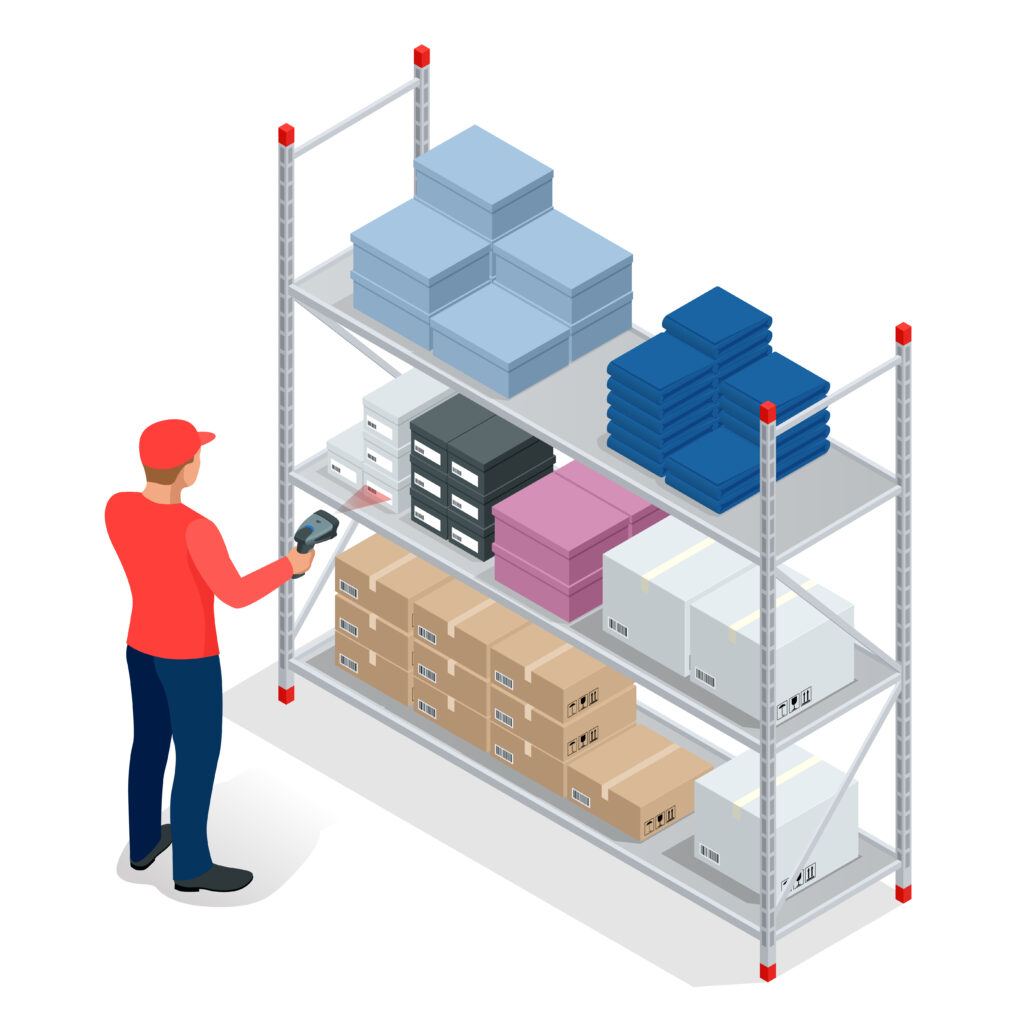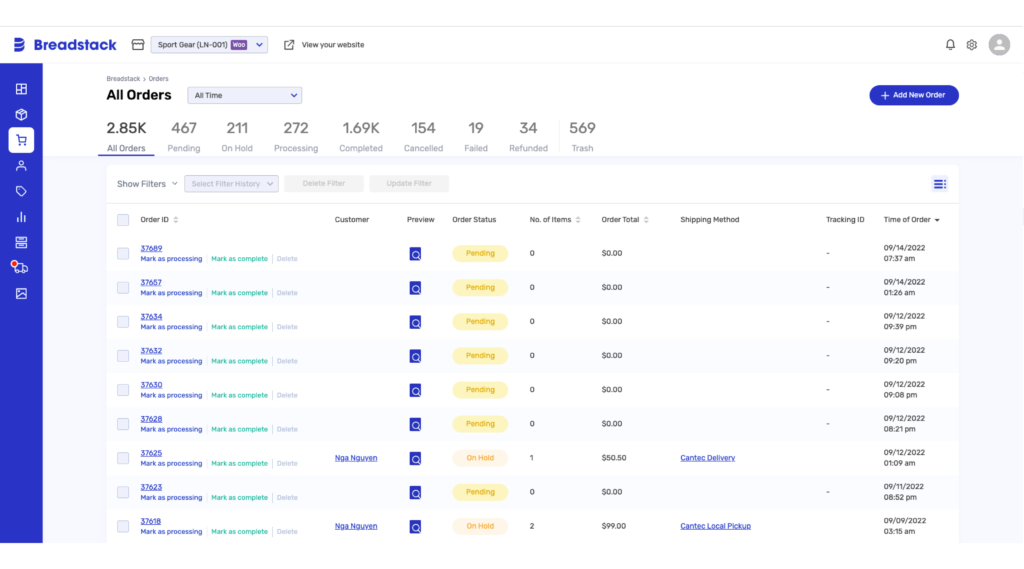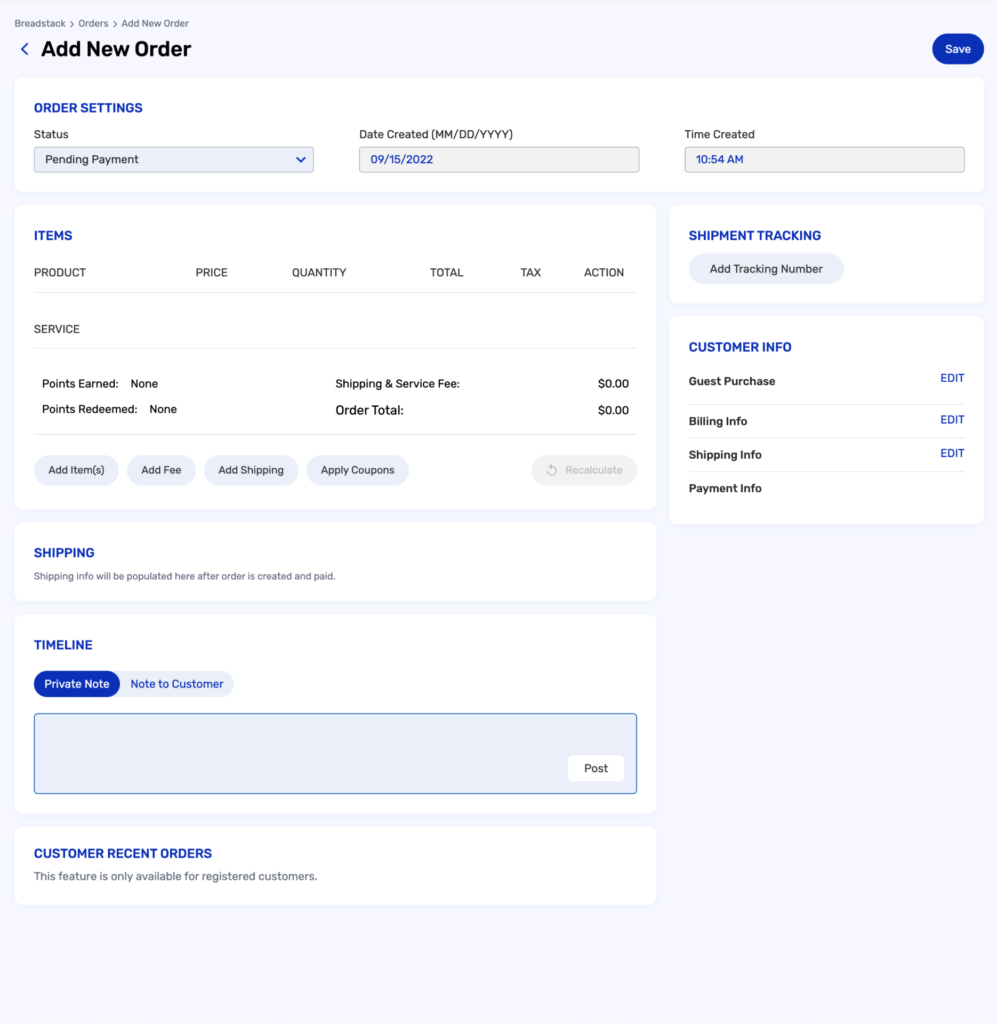Order management is a fundamental part of any business that offers products. It’s the process of receiving, fulfilling, and tracking orders from customers.
We’ll teach you some of the basics that revolve around order management.

What is order management?
Order management is the process of receiving tracking and fulfilling orders from customers.
The cycle of order management starts when an order is placed and finishes when that same order is delivered to the customer.
Order management can be a complicated and timely process for businesses if done incorrectly. However, optimizing and streamlining the ordering process will allow your business to save time and money.
It doesn’t matter what point in your business you are at. You can always start optimizing the ordering process at any time with order management.
The process of order management
As soon as the customer clicks the payment button the order management process has started.
It won’t end until that customer has received their order. This all requires several different steps to see success with each order given out.
Here’s a breakdown of the process.
1. Order Placed
A customer purchases your product across one of your channels (most commonly, will be a website)
Although if you also have a physical location, some businesses allow customers to place orders on items that are out of stock in-store, but can deliver the item once they have it back.
After the item is purchased for order, it has officially triggered the order management process.
2. Picking order
Once the order has been placed, the order fulfillment process in order management takes over. The first step in this fulfillment process is picking the order.
Warehouse workers will need to quickly and accurately find the order.
*Quick tip – An organized warehouse is essential for a successful order management process. If you can’t find the item you are looking for you are wasting time and money.

3. Packing Order
After the item has been found the next fulfillment process is packing the order. Usually, the picking and packing of the order are done by different people.
The packer gets the item ready for shipping and is responsible for a quality check.
4. Shipping the order
Once the item is ready to be shipped, again, the shipping part is usually done by a different person. The shipping part will have 3 tasks.
- attach the necessary labels and invoice with the item
- mark that the item has shipped
- send out the information to the customer and any other channels
5. Post-sales order
After the item has officially been shipped, it’s important to mark the order as shipped to end the order management process.
Businesses should also follow up with customers to receive feedback. Returns and refunds need to be considered as well. Having an easy return and refund system in place ensures you can manage them in the best way possible.
Better order management means faster delivery
Order management is a fundamental part of any business that has to ship items. Customer expectations have increased. They want better and faster delivery.
Whether that’s same-day delivery or offering real-time delivery.
Before businesses would take weeks or even months to ship products, but after years of companies improving their shipping efforts in the backend through order management, they’ve been able to do this process faster.
Amazon is a perfect example of faster shipping being offered. They never use to offer same-day delivery, but as they’ve successfully been able to scale their business, their delivery has also continued to scale.
But Amazon is a billion-dollar company, how does this compare to small or even medium-sized companies?
Well, customers still want their products fast and companies are continually trying to get their delivery better.
The secret is order management. An optimized order management system allows you to improve delivery times.

The importance of order management
There are a few key things that come to mind when understanding the importance of order management.
Improve Efficiency
A good order management system in place will speed up everything. Orders can be received quicker, they can be found, packed, shipped and delivered faster.
Order fulfillment strategy is a big process. Every order not received quickly, item not found on the first try, or wrong order made is time lost on getting orders out.
All of this becomes especially true when you continue to scale. If your order management process isn’t in place with a few items everything will escalate when you continue to get more orders.
Better inventory forecast
The order management process will ensure you have the right available items in stock – this also works both ways.
Overstock of inventory could mean lost cash flow and understocked inventory also means lost cash flow and even worse, lost customers.
A good system will provide an overview of all inventory levels. It could also forecast ordering patterns for the future to give you an outline of requirements and expenses.
Looking to optimize inventory right now? Check out our article “Tips for Inventory Management“.
Less human error
Order management helps reduce human error based on a few things, the first thing is the process.
It will have a process set up with each step laid out. Employees can follow the whole ordering process without missing a beat. This even goes for using fulfillment processes within order management.
Another factor of human error with ordering is misidentifying information. It could be the wrong item or wrong information and both will hold up your order process.
Order management uses automation to limit exactly these errors.

Streamline orders with Breadstack
Use automation to simplify the process such as generating orders, creating order lists and synchronizing with the entire order fulfillment process to send out products.
Customer-generated orders
All the orders going through the storefront will be displayed on the Order Module, on Breadstack. It shows all the related information such as item information, total amount, order time, order status, address, and customer information.

Advanced filtering
In order to quickly find an order, there is an advanced filter section on top of the order list. The section contains filters of all the information, such as order status, addresses, order total, included products, and customer information.
Order lists
The order list provides an overview of all order-identifying information. Orders are put onto different tabs based on their status.
The information listed on this page includes order IDs, customer names associated with each order, time of order placements, order previews, number of items in each order, and shipping method and tracking.
Order creating and modification
Breadstack allows store managers to create and modify orders directly. To create an order, information such as items, customer, and shipping information will need to be filled in. Once it is created, it can be processed as a regular order.

Shipment tracking
Breadstack allows tracking IDs to be attached to an order. Once it is attached, the store operator will have access to the package’s tracking information.
Shipping information will also be detailed in the Shipping section after an order has been created and paid.
Customer information
All orders should have a customer associated with them. The customer information is available on both the Order module and the Customer module, on Breadstack.
On the order page, it details the customer’s information such as name, address and payment info.
Order management is important for any business that offers products. Receiving, fulfilling, and tracking those products greatly impact your customer satisfaction as well as your revenue.
Breadstack can help optimize your order management so you can continue to improve efficiency and allow yourself to scale. Contact us today to get started!
Ready to optimize your order management?

